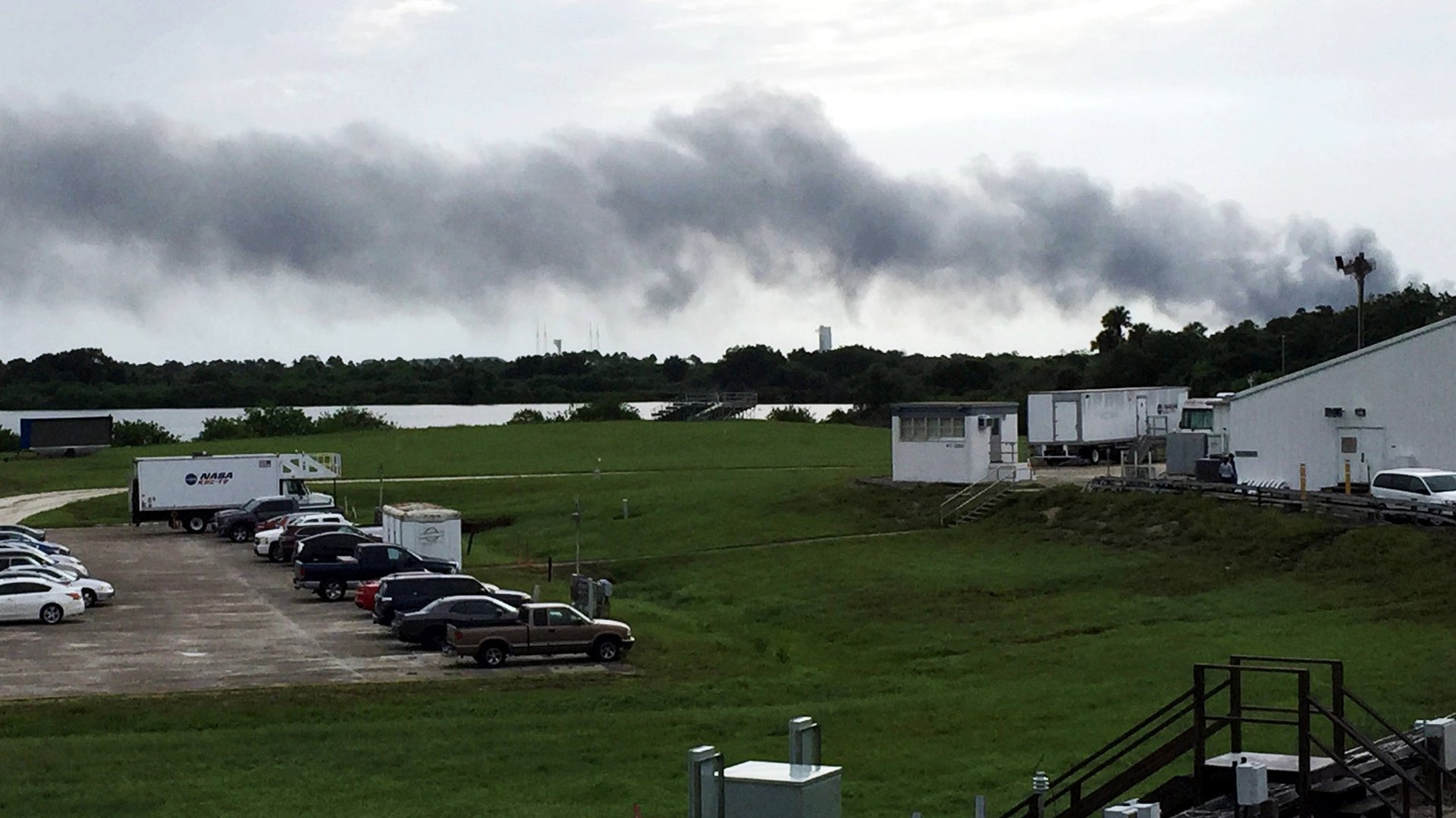A SpaceX rocket has exploded on the launch pad at Cape Canaveral
A SpaceX Falcon 9 rocket exploded on the launch pad in Cape Canaveral, Florida, in what could be a major setback for Elon Musk’s space company.


A SpaceX Falcon 9 rocket exploded on the launch pad in Cape Canaveral, Florida, in what could be a major setback for Elon Musk’s space company.
Eyewitnesses and local media are reporting a series of explosions that shook nearby buildings and left the rocket in flames, with emergency crews rushing to the launchpad.
“During a standard pre-launch static fire test for the AMOS-6 mission, there was an anomaly at SpaceX’s Cape Canaveral Space Launch Complex 40 resulting in loss of the vehicle,” the company said in a statement. “The anomaly originated around the upper stage oxygen tank and occurred during propellant loading of the vehicle. Per standard operating procedure, all personnel were clear of the pad and there were no injuries.”
SpaceX typically test-fires its rocket engines ahead of any launch. It may take days or months to figure out what specifically went wrong this morning as the propellant—which includes liquid oxygen and highly-refined kerosene—was loaded into the rocket. We do know that SpaceX introduced a new fueling system this year that led to several delayed launches as the kinks in loading were worked out.
You can see what happened in this US Launch Report video; the explosion occurs around 1 minute 10 seconds into the clip:
The rocket was preparing to launch an Israeli communications satellite, Amos 6, into space on Sept. 3. The satellite, which weighs 5.5 tons and cost more than $100 million to manufacture, was lost in the explosion. Facebook had intended to use some of the satellite’s bandwidth to boost internet connectivity in Africa.
SpaceX has only lost one previous rocket during a flight, when a cargo mission to the International Space Station exploded in June of 2015. The six-month delay while the problem was isolated and fixed cost the company hundreds of millions of dollars in lost revenue. So far in 2016, the company had hit all of its launch goals and set a new annual launch record with a successful flight in mid-August.
The explosion comes at a difficult time for SpaceX. Executives hoped that the Falcon 9 rocket—and its lucrative launch business—would continue operating reliably while the company tested a reusable rocket and its new Falcon Heavy rocket before the end of the year. Meanwhile, SpaceX is racing Boeing to be the first private company to fly humans into space with its Dragon 2 spacecraft, and had expected to begin rigorous testing in early 2017.
A lengthy return-to-flight process would pull engineering and financial resources away from these new projects, and likely mean additional work to convince clients like NASA and satellite-maker SES of the Falcon 9’s reliability.